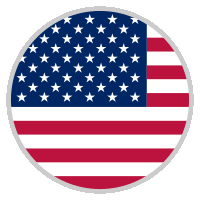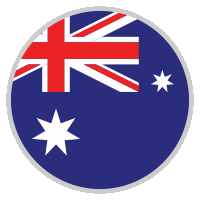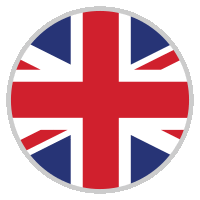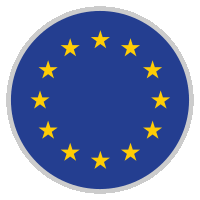Catalog No.
Product Name
Application
Product Information
Product Citation
-
Apoptosis Inducer
Andrographolide is an interesting pharmacophore with anticancer and immunomodulatory activities and hence has the potential for being developed as a cancer therapeutic agent. - Parthenolide ((-)-Parthenolide) is a sesquiterpene lactone which occurs naturally in the plant feverfew (Tanacetum parthenium).
- Sulfasalazine is a drug for the treatment of rheumatoid arthritis and ulcerative colitis. Sulfasalazine is reported to suppress NF-κB activity.
-
NF-kB inhibitor/Proteasome activator
18α-Glycyrrhetinic acid (18α-GA) is a bioactive triterpenoid found in licorice. It shows selective inhibition of 11-HSD1 (11-hydroxysteroid dehydrogenase 1). -
NF-κB inhibitor
QNZ inhibits the activation of the transcription factor NF-κB and has been used to investigate NF-κB signaling. -
food flavouring
2',5'-Dihydroxyacetophenone (DHAP, 2-Acetylhydroquinone, Quinacetophenone) is a mixture of dihydroxyacetophenone isomers is used in food flavouring. 2',5'-Dihydroxyacetophenone significantly inhibits NO production via the suppression of iNOS expression. 2',5'-Dihydroxyacetophenone significantly decreases levels of the pro-inflammatory cytokines TNF-α and IL-6 by blocking the ERK1/2 and NF-κB signaling pathways. -
NF-κB activation inhibitor
Caffeic acid phenethyl ester is a potent and specific inhibitor of NF-κB activation -
NF-κB inhibitor
JSH 23 is an inhibitor of NF-kB, blocking its translocation into the nucleus (IC50 = 7.1 uM)- Yu N, .et al. , Radiat Res, 2018, Apr;189(4):409-417 PMID: 29420126
-
NF-κB inhibitor
SC75741 is a potent NF-kB inhibitor with EC50 of 200 nM.- Yunshang Yang, .et al. , Biomed Pharmacother, 2023, Feb;158:114113 PMID: 36516692
- Yajun Li, .et al. , Cell Prolif, 2022, Oct;55(10) PMID: 35708050
- Crystal A Mendoza, .et al. , Antiviral Res, 2021, Jan;185:104993 PMID: 33296695
- Dehydrocostus Lactone inhibits NF kappa B activation by preventing TNF-α induced degradation and phosphorylation.
-
NF-κB inhibitor
CID-2858522 selectively inhibits the NF-κB pathway (IC50 < 0.1 uM for PMA-stimulated IL-8 production) induced by PKC, operating downstream of PKC but upstream of IKKbeta, without inhibiting other NF-kappaB activation pathways. -
antiinflammatory agent
Homoplantaginin is a flavonoid from a traditional Chinese medicine Salvia plebeia with antiinflammatory and antioxidant properties. Homoplantaginin could inhibit TNF-α and IL-6 mRNA expression, IKKβ and NF-κB phosphorylation. -
endothelial barrier enhancer
Ginsenoside Rk1, one of the main elements of Sung Ginseng, has been confirmed as a new endothelial barrier enhancer recently and has anti-cancer activity. - Tectochrysin (Techtochrysin) is one of the major flavonoids of Alpinia oxyphylla Miquel. Tectochrysin (Techtochrysin) inhibits activity of NF-κB.
-
Analog of curcumin
Dimethoxycurcumin, a synthetic curcumin analogue with higher metabolic stability, inhibits NO production, inducible NO synthase expression and NF-kappaB activation in RAW264.7 macrophages activated with LPS. -
Anti-adipogenic, anti-inflammatory, and anti-neoplastic activities
Triphala, an Ayurvedic polyherbal formulation comprising of equiproportional fruit parts of Terminalia chebula, Terminalia bellerica, and Phyllanthus emblica. Triphala inhibits NF-κB activation. Triphala exerts antifungal action. Anti-adipogenic, anti-inflammatory, and anti-neoplastic activities. -
ERK/Akt/NF-kB inhibitor
Tomatidine inhibits the phosphorylation of ERK, Akt, and the nuclear content of NF-kB. possess anti-inflammatory properties. -
NF-kB inhibitor
Pyrrolidinedithiocarbamate ammonium is a selective NF-kB inhibitor, inhibits translation of nitric oxide synthase mRNA to prevent induction. -
NF-kB inhibitor
Withaferin A is a steroidal lactone present in W. somnifera that at 2-25 μM has been shown to bind to and induce aggregation of vimentin intermediate filaments in cultured endothelial cells and fibroblasts, causing apoptosis.- Chang-Mu Chen, .et al. , Phytomedicine, 2020, Dec;79:153352 PMID: 33007732
- Cynaropicrin is a sesquiterpene lactone originally isolated from artichoke (C. scolymus) that has diverse biological activities. It inhibits the growth of SKOV3, LOX-IMVI, A549, MCF-7, HCT15, and PC-3 cancer cells (IC50s = 1.1-8.7 μg/ml).
- Lipoic Acid, also known as R-(+)-alpha-Lipoic acid, is an organosulfur compound derived from octanoic acid. It is made in animals normally, and is essential for aerobic metabolism. It is also manufactured and is available as a dietary supplement in some countries where it is marketed as an antioxidant, and is available as a pharmaceutical drug in other countries.
-
oncometabolite
Fumaric acid is a fundamental unit of nucleic acids.. It is a oncometabolite or an endogenous, cancer causing metabolite. High levels of this organic acid can be found in tumors or biofluids surrounding tumors. Its oncogenic action appears to due to its ability to inhibit prolyl hydroxylase-containing enzymes. - 4-Hydroxychalcone is a chalcone metabolite with anti-angiogenic and anti-inflammatory activities.
- CDDO-dhTFEA (RTA dh404) is a synthetic oleanane triterpenoid compound which potently activates Nrf2 and inhibits the pro-inflammatory transcription factor NF-κB.
-
Smurf1 inhibitor
Smurf1-IN-A01 (A01) is an ubiquitin ligase Smad ubiquitination regulatory factor-1 (Smurf1) inhibitor with a kd of 3.664 nM, which increases BMP-2 responsiveness by inhibiting Smurf1-mediated Smad1/5 degradation. - Dexanabinol exhibits not only the antioxidant and neuroprotective activities in brain but also anti-inflammatory activity by inhibiting NF-κB and decreasing cytokines such as TNFα and interleukin-6, which could ensure the integrity of BBB and reduce cell apoptosis and death.
-
NF-κB inhibitor
Cyclo(his-pro) (Cyclo(histidyl-proline)) is an orally active cyclic dipeptide structurally related to tyreotropin-releasing hormone. Cyclo(his-pro) could inhibit NF-κB nuclear accumulation. -
NF-κB inhibitor
WAY-204688 is an estrogen receptor (ER-α) selective, orally active inhibitor of NF-κB transcriptional activity with an IC50 of 122?±?30 nM for NF-κB-luciferase (NF-κB-luc) in HAECT-1 cells. -
NF-κB inhibitor
Edasalonexent (CAT-1004) is an orally bioavailable NF-κB inhibitor. -
NF-κB inhibitor
DHMEQ racemate is a NF-κB inhibitor. DHMEQ racemate is less active than (-)-DHMEQ. -
mitochondria-targeted antioxidant
Demethyleneberberine is a natural mitochondria-targeted antioxidant. -
Autophagy inducer
Tomatidine hydrochloride acts as an anti-inflammatory agent by blocking NF-κB and JNK signaling. Tomatidine hydrochloride activates autophagy either in mammal cells or C elegans. -
NF-κB inhibitor
Urolithin B is one of the gut microbial metabolites of ellagitannins, and has anti-inflammatory and antioxidant effects. Urolithin B is also a regulator of skeletal muscle mass. -
traditional Chinese medicines
(±)-Praeruptorin A is the di-esterified product of cis-khellactone (CKL) and the major active ingredient in Peucedani Radix which consists of the dried roots of Peucedanum praeruptorumDunn (Apiaceae). (±)-Praeruptorin A has been widely employed as one of the famous traditional Chinese medicines (TCMs) for the treatment of cough with thick sputum and dyspnea, nonproductive cough and upper respiratory infections for centuries in China. (±)-Praeruptorin A has dramatically therapeutic effects on hypertension mainly through acting as a Ca2+-influx blocker. -
antithyroid agent
Methylthiouracil is an antithyroid agent. Methylthiouracil suppresses the production TNF-α and IL-6, and the activation of NF-κB and ERK1/2. -
antiinflammation agent
Ginsenoside Re (Ginsenoside B2) is an extract from Panax notoginseng. Ginsenoside Re decreases the β-amyloid protein (Aβ). Ginsenoside Re plays a role in antiinflammation through inhibition of JNK and NF-κB. -
anticancer agent
Ursolic acid, a naturally occurring triterpenoid, induces the apoptosis of human cancer cells through multiple signaling pathways. -
glutamate decarboxylase inhibitor
Chelidonic acid is a glutamate decarboxylase inhibitor, with a Ki of 1.2 μM. -
HMGB1 release inhibitor
Ethyl pyruvate is a simple derivative of the endogenous metabolite, pyruvic acid. Ethyl pyruvate is an anti-inflammatory agent.








